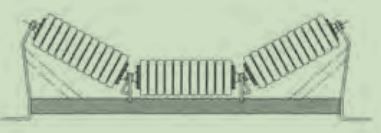 Afrikaans
Afrikaans  Albanian
Albanian  Amharic
Amharic  Arabic
Arabic  Armenian
Armenian  Azerbaijani
Azerbaijani  Basque
Basque  Belarusian
Belarusian  Bengali
Bengali  Bosnian
Bosnian  Bulgarian
Bulgarian  Catalan
Catalan  Cebuano
Cebuano  Corsican
Corsican  Croatian
Croatian  Czech
Czech  Danish
Danish  Dutch
Dutch  English
English  Esperanto
Esperanto  Estonian
Estonian  Finnish
Finnish  French
French  Frisian
Frisian  Galician
Galician  Georgian
Georgian  German
German  Greek
Greek  Gujarati
Gujarati  Haitian Creole
Haitian Creole  hausa
hausa  hawaiian
hawaiian  Hebrew
Hebrew  Hindi
Hindi  Miao
Miao  Hungarian
Hungarian  Icelandic
Icelandic  igbo
igbo  Indonesian
Indonesian  irish
irish  Italian
Italian  Japanese
Japanese  Javanese
Javanese  Kannada
Kannada  kazakh
kazakh  Khmer
Khmer  Rwandese
Rwandese  Korean
Korean  Kurdish
Kurdish  Kyrgyz
Kyrgyz  Lao
Lao  Latin
Latin  Latvian
Latvian  Lithuanian
Lithuanian  Luxembourgish
Luxembourgish  Macedonian
Macedonian  Malgashi
Malgashi  Malay
Malay  Malayalam
Malayalam  Maltese
Maltese  Maori
Maori  Marathi
Marathi  Mongolian
Mongolian  Myanmar
Myanmar  Nepali
Nepali  Norwegian
Norwegian  Norwegian
Norwegian  Occitan
Occitan  Pashto
Pashto  Persian
Persian  Polish
Polish  Portuguese
Portuguese  Punjabi
Punjabi  Romanian
Romanian  Russian
Russian  Samoan
Samoan  Scottish Gaelic
Scottish Gaelic  Serbian
Serbian  Sesotho
Sesotho  Shona
Shona  Sindhi
Sindhi  Sinhala
Sinhala  Slovak
Slovak  Slovenian
Slovenian  Somali
Somali  Spanish
Spanish  Sundanese
Sundanese  Swahili
Swahili  Swedish
Swedish  Tagalog
Tagalog  Tajik
Tajik  Tamil
Tamil  Tatar
Tatar  Telugu
Telugu  Thai
Thai  Turkish
Turkish  Turkmen
Turkmen  Ukrainian
Ukrainian  Urdu
Urdu  Uighur
Uighur  Uzbek
Uzbek  Vietnamese
Vietnamese  Welsh
Welsh  Bantu
Bantu  Yiddish
Yiddish  Yoruba
Yoruba  Zulu
Zulu v belt drive pulley
Understanding V-Belt Drive Pulley Systems
V-belt drive pulley systems play a crucial role in various mechanical applications, providing a reliable means of power transmission in numerous industries. These systems are widely used in machinery ranging from industrial equipment to household appliances, and understanding their components and functionality is essential for effective maintenance and operation.
What is a V-Belt Drive Pulley?
A V-belt drive usually consists of a pair of pulleys connected by a V-shaped belt. The pulleys are typically mounted on shafts and rotate to transmit power from one shaft to another. The V-shape of the belt serves several purposes it allows for better grip between the belt and the pulley, reduces slippage, and accommodates the misalignment that may occur during operation. The design also promotes efficient energy transfer, making V-belt drives a popular choice for various applications.
Key Components
1. Pulleys The pulleys are the central components in a V-belt drive system. Each pulley has a groove that fits snugly around the V-belt. They can differ in size, influencing the speed and torque. Larger pulleys will generally result in higher torque and lower speed, whereas smaller ones will do the opposite.
2. V-Belts These belts are manufactured from durable materials, including rubber composites and fabric layers, to withstand wear and tear. They come in various sizes and shapes, designed for different load capacities and machine requirements. The V-belt's cross-section allows it to operate under tension while maintaining its shape, ensuring consistent performance.
3. Tensioners and Idlers In many systems, tensioners and idler pulleys help maintain proper tension in the V-belt, ensuring optimal contact with the drive pulleys. This maintenance of tension is vital to prevent slippage and ensure longevity.
Advantages of V-Belt Drives
V-belt drives offer numerous advantages, making them a preferred choice in many applications
v belt drive pulley

- High Efficiency V-belt drives can achieve an efficiency rating of around 95% or higher under the right conditions, minimizing energy losses during power transmission.
- Simplicity The configuration of a V-belt drive is straightforward, making installation and maintenance easy. This simplicity translates to lower labor costs and quicker repairs.
- Noise Reduction Compared to chain drives, V-belt drives typically operate more quietly, a significant advantage in environments where noise levels must be kept low.
- Shock Absorption V-belt drives can absorb shock loads effectively, protecting the machinery from abrupt changes in power transmission. This characteristic helps to extend the lifespan of both the belt and the associated equipment.
Applications
V-belt drives are pervasive across various industries. One of the most common applications is in agricultural machinery, such as tractors and combine harvesters, where consistent power transfer is vital for efficient operation. They are also found in HVAC systems for driving fans and pumps, in automotive engines to run alternators, and in manufacturing equipment for conveyor systems.
Maintenance of V-Belt Drive Systems
To ensure reliability and extend the lifespan of V-belt drive systems, regular maintenance is essential. This includes checking the tension of the belts, inspecting for wear or damage, and ensuring that the pulleys are aligned correctly. In addition, proper lubrication of moving parts can help prevent friction and prolong the life of the system.
Conclusion
V-belt drive pulley systems are integral to the performance of a vast array of machinery and equipment. Their design offers a unique blend of efficiency, simplicity, and durability. Understanding how they work and how to maintain them can lead to enhanced operational performance and reduced downtime. As industries continue to evolve, the demand for reliable power transmission solutions will ensure that V-belt drives remain a fundamental component of mechanical engineering.
-
Revolutionizing Conveyor Reliability with Advanced Rubber Lagging PulleysNewsJul.22,2025
-
Powering Precision and Durability with Expert Manufacturers of Conveyor ComponentsNewsJul.22,2025
-
Optimizing Conveyor Systems with Advanced Conveyor AccessoriesNewsJul.22,2025
-
Maximize Conveyor Efficiency with Quality Conveyor Idler PulleysNewsJul.22,2025
-
Future-Proof Your Conveyor System with High-Performance Polyurethane RollerNewsJul.22,2025
-
Driving Efficiency Forward with Quality Idlers and RollersNewsJul.22,2025





























